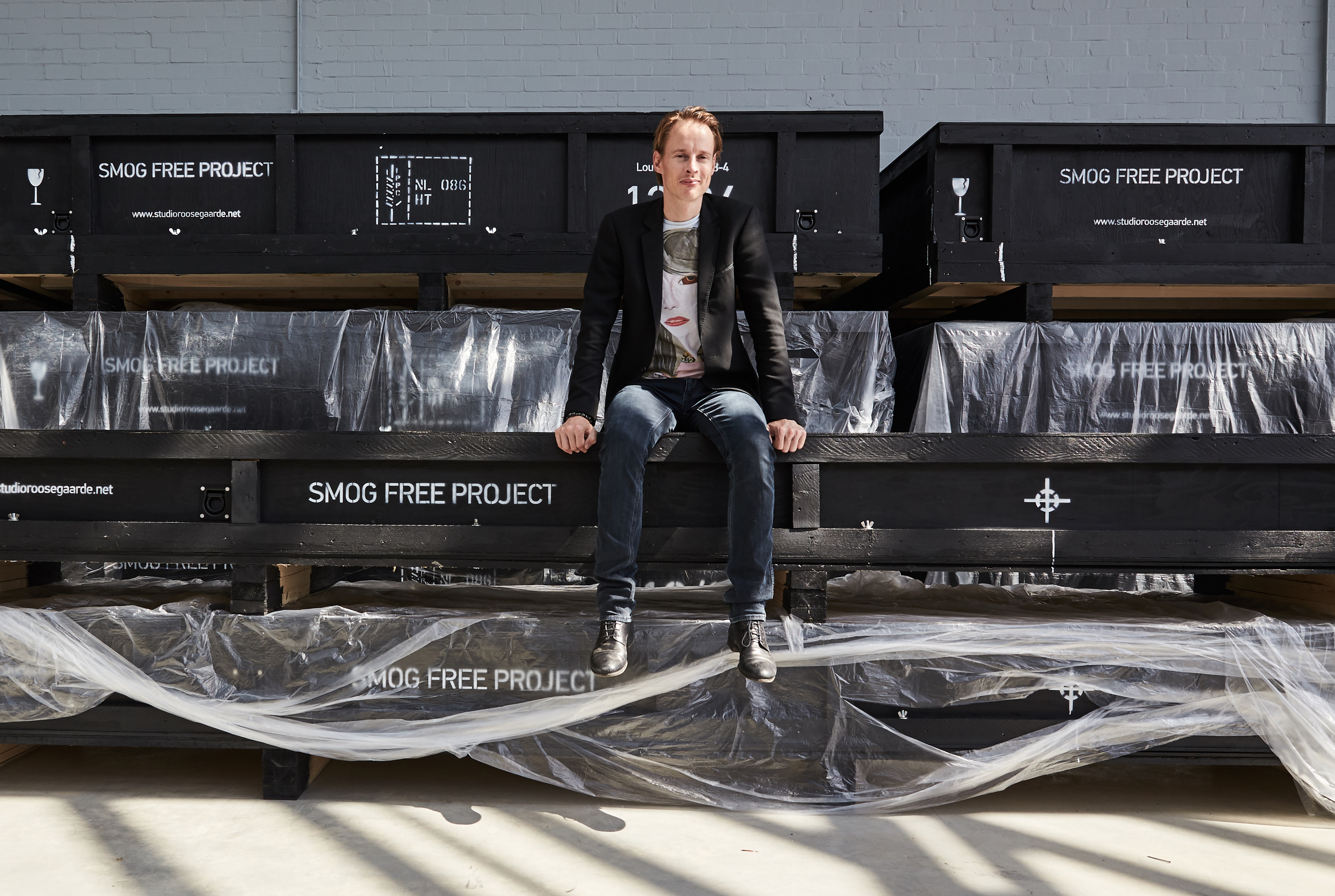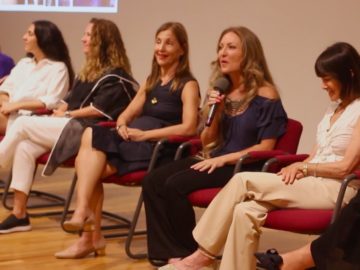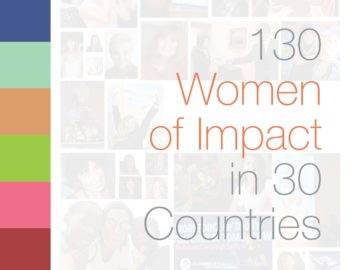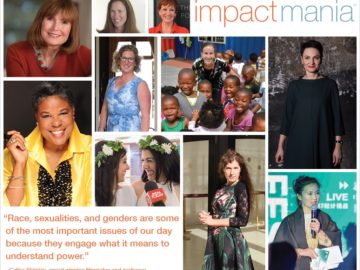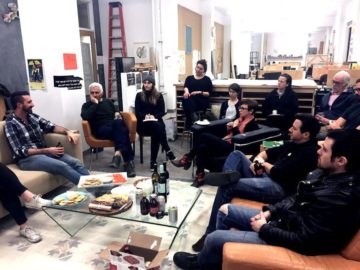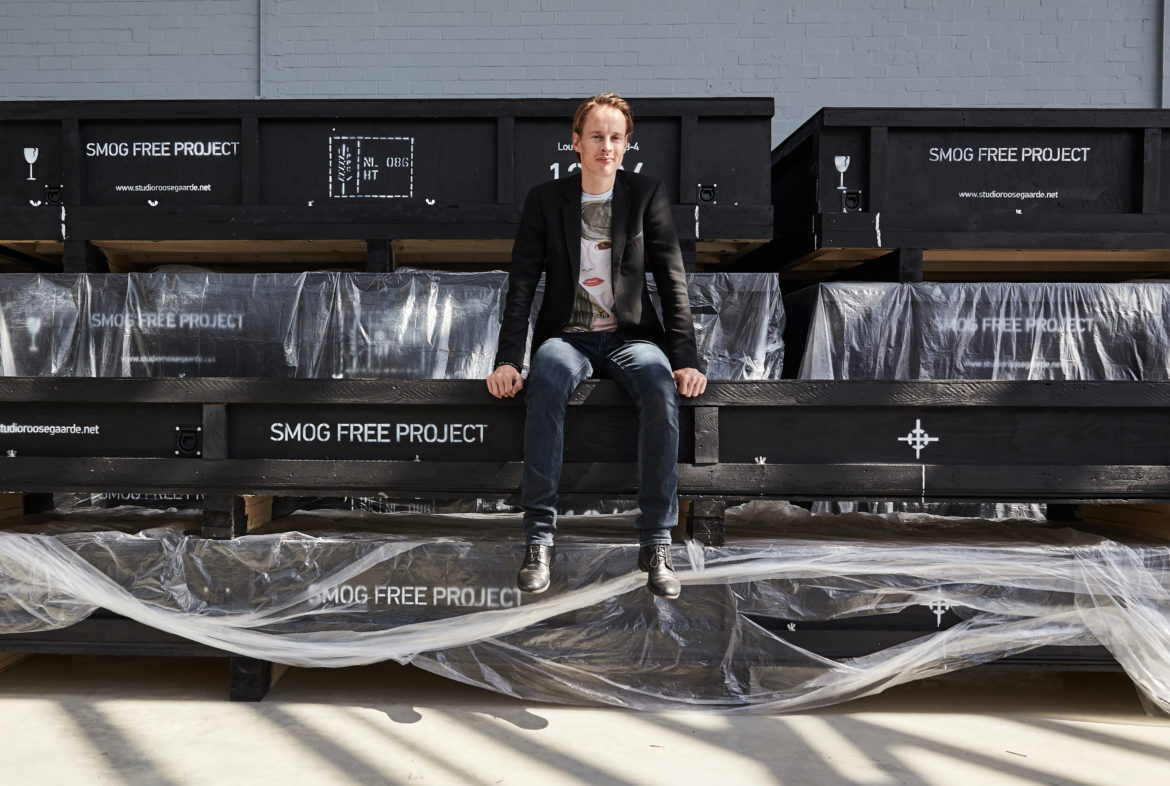
Innovator Daan Roosegaarde on Being Future Proof
BY PAKSY PLACKIS-CHENG
Daan Roosegaarde, the global impact maker, designer, and innovator, has made a name for himself with a number of projects, including the Smog Free Tower that is currently touring China. Daan spoke with impactmania about how he is preparing for the future.
Why design?
Because life is liquid. We can make things to improve life, to adapt, and to change. That is the essence of design for me. It’s not about chairs, lamps, or tables, but it’s to improve life. The world needs new ideas to become future-proof — that’s a creative process and that’s a design process.
Give me an example of where you’re preparing for the future?
I spent time in Beijing, China. There’s a desire for progress and for innovation, but that has side effects that you and I never imagined, pollution and smog being some of them.
Then, we can do one of two things. We can wait, be a consumer, and say, “The government or the industry should fix this…”, or we can be a maker: make inventions and make proposals. That’s one thing I’m working on now with the Smog Free Tower.
I heard the Smog Free Tower is being shipped to China?
Yeah, it’s on its way to Beijing now. It’s the largest smog vacuum cleaner and it sucks up polluted air from the urban skies, cleaning it on the Nano-level — the ultra-fine particles — and then releases clean air into parks. You’ll have areas in the city which will be 75 percent cleaner than the rest of the city.
Here, design is meant to make places that are good for people again.
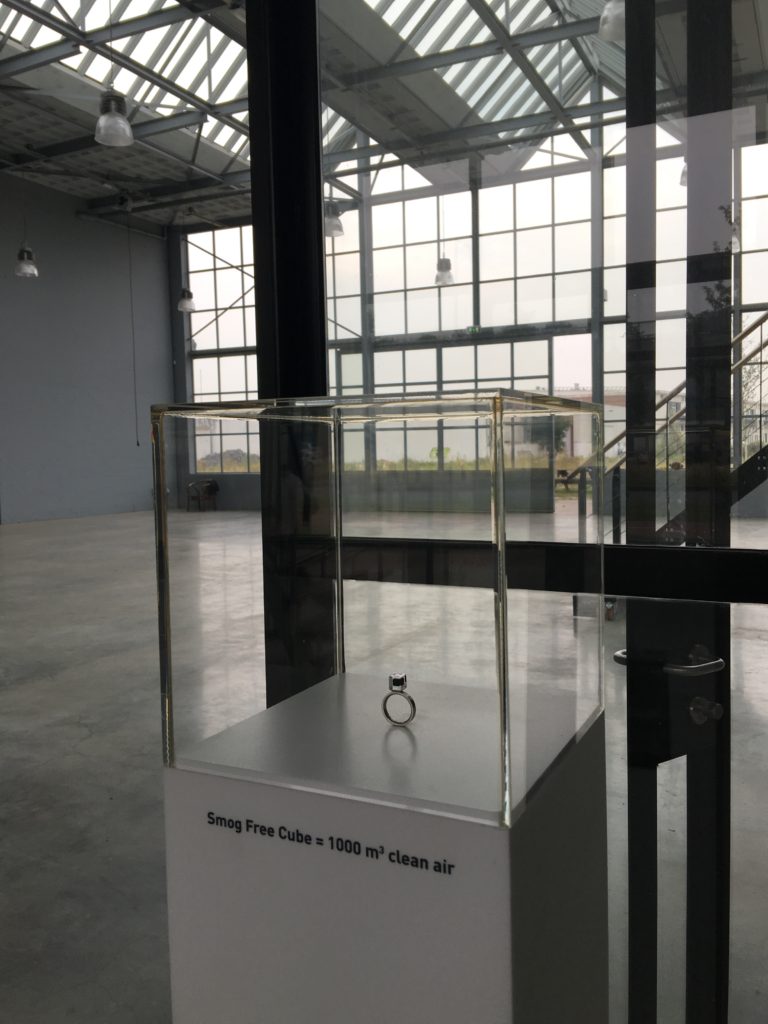
Studio Roosegaarde features a Smog Free Ring as a symbol of 1000 m3 clean air
Why does Roosegaarde Studio have a pop-up store in Shanghai?
China’s the future. Chinese all have this obsession for what is next. Four years ago, when I started, I was there quite frequently. There were a lot of people like myself. It’s good to have sort of boots on the ground, ‘cause it’s growing so fast. They are craving for all these kinds of designs.
How about the States?
West Coast, a lot of it, is green-based. I’m interested in the post-green era. The sort of ethical biology research that they’re doing is really, really interesting. Let’s grow things, instead of producing things by hand or machines. Of course, Singularity [University], XPRIZE— that’s all amazing. Space technologies are fascinating.
Tell me about a current project you’re working on besides the Smog Free Project.
We’re working on the Afsluitdijk. This is the iconic 32 kilometer dike, dam water infrastructure that protects the Netherlands from drowning, from dying. Without technology, without creative thinking, the Netherlands would be under water. It’s in the DNA of the landscape I grew up in.
This dyke is almost 100 years old. It’s this beautiful 32 kilometers straight line through the water. The Dutch Government commissioned us to make a new design while they are renovating it to give it an enhancement.
That’s very special because dykes in the Netherlands are as holy as cows in India. As you know, you can never touch them. Now we can and we’re going to add a very subtle layer of light, of interactivity, on top of the dyke to give it a special meaning.
Similar in a way, but different in terms of design, to the Van Gogh bicycle path, which charges at daytime and glows at night. On the one hand, it relates to the history and time that Van Gogh actually lived and worked in this area. On the other hand, it refers to the future: energy sufficient landscapes making a place which you feel poetically connected to.
With all these projects, are there any personal passion projects left?
Of course, this is the problem of an obsession — it always keeps on going. [Laughs.] We love to operate within the art and design world. At the same time, I personally have a high interest in the public space — a place which is sharable and which everybody uses.
We’re looking for more of these larger city landscape projects, which are interactive, energy harvesting, or extremely poetic. That’s something you’ll see popping up in the coming year and a half.
Give me an example of something that already exists that’s in line with what you’re referring to.
There’s so much. We did a smart highway project: making highways which charge at daytime and glow at night.
When we talk about innovation and mobility, everybody always focuses on the car that can be glamorous, sexy, and worth billions of R&D. Somehow the roads and signs you actually see while you’re driving are completely disconnected from this thinking. They should be cheap and maintenance-free, but nobody cares. It’s weird because the roads somehow also determine the landscape you and I grew up in.
When you build it, it’s there for generations and generations. That’s very interesting: connecting new technology with the space that we use every day. The moment you connect them they have a new purpose; they give a new experience.
Where is this all coming from?
I’m not trying to understand it. But I think there are some things that are important. One is the Netherlands itself. I grew up in a country which is below sea level.
Everything you see is artificial, man-made. So in a weird way, the Dutch already have this very beautiful but fragile relationship between nature and technology, since without the windmills and the dykes we would all drown. When you look at that and you look at the future, you begin to wonder how we can make places where technology help us feel more connected to the world around us.
I think that that’s an important element. We’re sitting behind computer screens the whole day, feeding our emotions and lives through some kind of Twitter, Facebook, or Weibo cloud. But what happens to the physical world, which is either abandoned, left behind, or simply ignored? What happens if we use technology that jumps out of the computer screen and becomes part of the things that we wear, the roads that we drive on?
I want to merge worlds. I want to make them more connected. There’s some kind of a naive notion that this will be better. It absolutely will — at least that’s why I do these projects.
You’re hopeful that this will be better: this merging of technology and people?
Yeah, and there’s of course a George Orwell scenario where it’s used to dominate and to reduce, but there’s also a Da Vinci scenario where we explore, where we are curious, and where learn to cure ourselves — a scenario where we learn how to fly or learn how to communicate more intuitively.
You do that by making. There’s this famous quote by Marshall McLuhan, a Canadian author, who once said: “There are no passengers on spaceship earth. We are all crew.” I like that a lot because we’re part of the bubble that we live in.
Some things are not working — we know that, so let’s try to make proposals on how we can improve things. Design is a really good way of realizing it, because it’s about the dream, the idea. It’s about the technology and material research; it’s about a collective group of people from different disciplines working together; and about making something you can look at and you can touch. There will be mistakes, but in the end, it’s shareable.
What have you learned from working with people, space, and technology?
That you can show people that there is more to reality than what there is right now. Sometimes people have very limited understanding of what is and of what can and cannot be. Right now, we’re in a Dream Factory [Roosegaarde’s Studio] which is a renovated glass house. This is a big space where we work on the larger prototypes.
I spent eight months fighting for the right details here, but it worked. Upstairs, we have the smaller studios where the designers, architects, and engineers are working on the different designs. Every project is different, but it is always about innovation. Always something new.
In the beginning, you have some people saying that what you want, can never be done, or that it’s not allowed.
It’s very Dutch, no?
[Laughs.] The Netherlands has its courageous, adventurous part. The whole dyke [Afsluitdijk] of 32 kilometers is built by hand between 1927 and 1932. There’s a monument made by Dudok, the famous architect, that states, “A country which is alive, invests in its future.” [Een volk dat leeft bouwt aan zijn toekomst.]
The Netherlands and Europe have lost this touch a bit. Nevertheless, it’s still a great place to experiment and to learn. You’ll get this response often: “This is not allowed” or “That is not possible”. What I experienced with every project that I’ve done, from dance floors, which produce electricity when you dance on them, to the Smog Free Tower, is that once you finally show it, some people say, “That’s a good idea, why didn’t you make it before?”.
These are the ungrateful faces of innovations, which you have to enjoy, and are also part of change. First, people have to get new ideas into their brain and they resist that a bit. In the end, it becomes part of the new default. So that’s okay.
Even if it’s positive impact, change can be scary, right?
Yeah, I never understood that. I’m more afraid of what happens if we don’t change. Then, we become one big open-air museum, which is great, but life is changing. You can’t change the tide, but you can choose the wave you’re riding on.
How many people are working on the Smog Free Tower?
We initiated the Smog Free Tower ourselves two and a half years ago: spent time, money, and energy on it. It was five to six people and some external experts who were good in air purifying. Now it’s really big, as China’s central government officially has declared its support.
When you talk about impact, you can have an idea, you can have technology, and you can prove that it’s there, but if it’s disconnected from decision makers, it’s just a dream. I like dreams, but you also want to infiltrate.
Be this happy infiltrator: prove it, show it, and create some buzz around it. Then, work together to say, “Okay, what can we do to make whole cities smog free?”, because it’s not only the Smog Free Tower — you need bicycles, clean air technology, electrical cars, you name it. I want to speed up that process.
We don’t wait for permission, we propose. It’s great to connect with the mayors and the governments of this world. Also, I am part of the World Economic Forum, because I need people with guts and courage, who say, “Okay, we are gonna push this project and we’re going to be a part of this.”
With all of this, what is needed for social impact?
I can’t speak for everyone, but for me, you need to be a bit of a hippy with a business plan. [Laughs.] I want to have the big dream idea: clean air for everyone or built and harvest energy.
You need to have these big ideas and you need to make the idea work: build it, test it, show it, prove it.
Do you know why you cannot tickle yourself?
…Because you’re prepared of what’s coming?
Exactly! [Laughs.] So when you talk about change, it’s quite interesting.
If I tickle you and I am not telling you, then you get an effect, an interaction. Apparently, even our own body already filters out what we know. We can only experience new things together if we interact with things beyond ourselves. That’s incredibly fascinating. The designs I make are an attempt to tickle society.
I can use big words like sustainability. In a way, sustainability is, for me, the feeling that you feel connected. You can make a fact sheet-driven sustainable building, but if people don’t connect with it, it will be abandoned and torn down, end of story.
We ask every interviewee who has had an impact on his/her professional DNA. Can you share one?
It’s weird, maybe, but I have it more with places. I like Schiphol [airport in the Netherlands], OMA, the architectural firm of Rem [Koolhaas], and this studio, the Dream Factory, where you can feel this buzz ‘cause people are in transit — they are curious and they are looking for their new status quo.
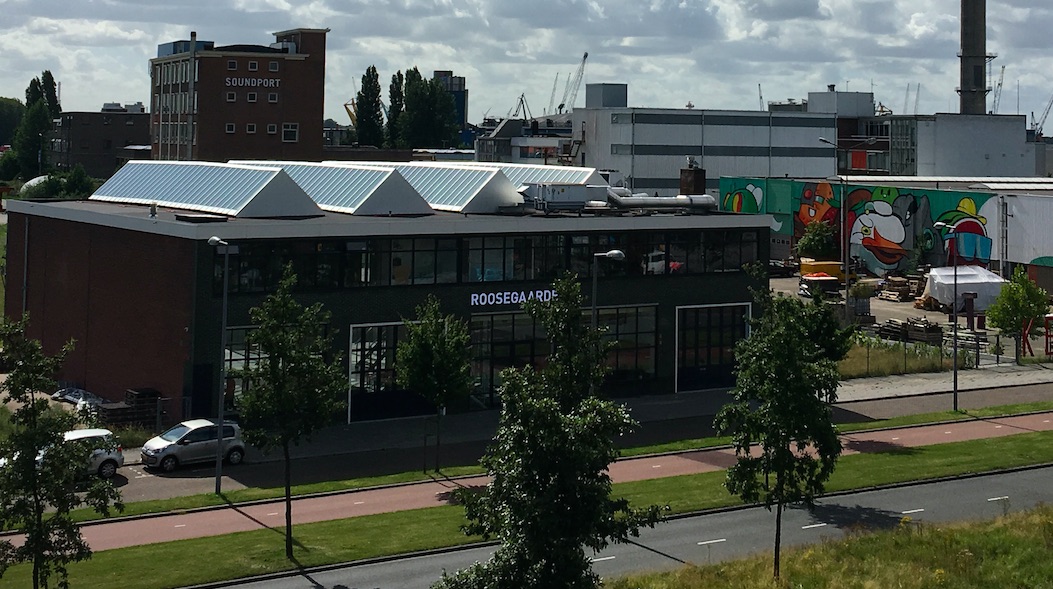
Roosegaarde Studio also known as The Dream Factory
Why Schiphol?
Schiphol is nice because everything is in transit. It’s weird because people are out of their comfort zone.
I like Kinderdijk with the windmill because they’re built in 1740. You could take water taxis from here [Rotterdam] and be there in 40 minutes. The windmills are like aliens. They look so weird, with this weird shape and turning. If you really look at them, they’re strange and beautiful objects. You can also imagine that there was a time when the [Dutch] government had guts and they just made these. I am sure people complained then as well. [Laughs.] Now, it’s a cultural heritage: UNESCO. People go to have their wedding photos taken. At that time, they were landscapes that were super functional. It’s also interesting how something, which is hyper-pragmatic, turns into poetry through time. These places help me remember — feeding the things that I make.
What’s next?
Well, in the coming weeks we have four openings, which is intense. The Smog Free Tower will open in Beijing and it is going to be part of a free tour going through different cities in China. Communicating with the mayors, the provincial committees, and with other people on how we can lessen pollution in the coming 10-15 years generates a huge crowd. Even the World Economic Forum movie we made had 28 million views in the first two to three weeks.
You create a movement, which is really good. People amaze me as well with their own innovations: we have bicycles, which suck up polluted air and then relay the clean air, so now you can cycle and have clean air. It’s great to be part of that movement.
We’re launching the dyke project, releasing the first of the permanent designs, which we’re building in the coming two years. It’s gonna be really special to make this dyke an experience that you cannot download; you have to go there.
We’re looking at biomimicry , since we have a fascination with jellyfishes and fireflies that are light-emitting. They have no battery, they have no solar panels, and they have no maintenance contact, but still they emit light. Actually, they are one of the oldest creatures out there. Still, when we look at how we deal with energy and light — the amount of electricity, cables, wires, and maintenance we need is quite brutal.
Are there principles in nature, which we can learn from to make our cities more human? That’s something we’re looking at.
The beauty of green energy opens up discussion. Don’t talk about fact sheets, but create something and offer it as an experience — something that people won’t forget.
What would you tell the next generation of designers?
They have to figure it out themselves. [Laughs.] I didn’t have anybody telling me what to do. First of all, figure it out yourself. And second, ignore some advice. It’s all about investing in your own dreams. You will always have people telling you that what you want can never be done, but it’s your job to prove them wrong. The world needs new ideas, new dreams, new things.
So don’t wait, act. You’re a maker, not a consumer. That mentality is, I think, crucial.
There is a World Economic Forum research: What are the top 10 skills you need as a human being to be successful?
It is not learning C++ programming or writing a business plan. Creativity is number three. Number two is associative thinking, and number one, complex problem solving — all things that a computer or a robot is really bad at. That’s fascinating. We might live in a world where, through technology and the Internet of things, the car will be collected or the trash taken out, but it also means that we have more time.
The real question is, what are we gonna do with this time? Will certain human skills be more important than ever? Going to a museum might not be a hobby anymore, but you might go to be triggered in a way, which makes you different than a computer. You might be witnessing a renaissance of arts and culture in the coming 15 – 20 years through this hyper-technological world. That is a world I’d like to design for.
Do you think the pendulum is swung too far the other way?
Yeah, we’re feeding the machine the whole day with our data and our emotions. There are some movements in design, which go back to handmade, but then you go back in a weird way. Maybe that doesn’t feel right for me. We should do more, not less.
So not the bespoke but customizing with use of technology?
Exactly, yeah. Don’t throw away the Industrial Revolution; don’t glamorize the pre-Industrial Revolution, but at the same time, don’t forget it.
It is like you experience this taste in your mouth, but you don’t know the ingredients, so you start to read and learn. In the beginning, it’s very vague, but in the end, you will have your top chef Michelin-Star dessert. This is a complex process, but it is a very fun one where you make mistakes, but where you learn. I wish the next generation a lot of fun.
Give me one word that describes your journey so far.
Intense.
No, maybe that’s not the right word. It’s intense, yeah, but not in a negative way. You have to be focused. There’s a lot of joy and pleasure, but there’s also friction. It’s driven by curiosity. Maybe curiosity is a better word than intense. But it’s real, because you know that there’s something out there. Of course you need a team who develops the concepts. I feel more like a hunter. You grab an idea, put it back here, and then it starts to grow.
This notion of curiosity is super important. If we lose that, then the machines have won. [Laughs].

